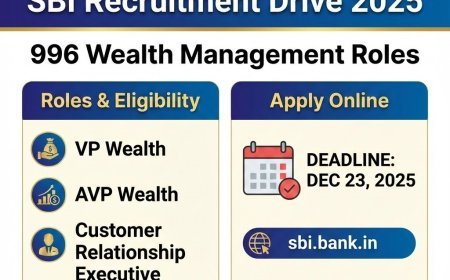NISM Series V A Mutual Fund Distributors Exam Series - 18
NISM Series VA Mutual Fund Distributors Exam Series - 18
Explore Additional Mock Tests Here
Q 1. Which index is the primary benchmark for Gold ETFs?
a) S&P 500
b) Shanghai Composite Index
c) CRISIL Composite Bond Fund Index
d) Gold price
e) S&P BSE Sensex
Q 2. What should an investor consider besides the need for growth or income?
a) Market conditions
b) Mutual fund expenses
c) Investment horizon and willingness to take risks
d) Past fund performance
e) None of the above
Q 3. What distinguishes equity, real estate, and commodities from bonds in terms of cash flows?
a) They offer fixed cash flows
b) They have unknown future returns
c) They provide guaranteed interest payments
d) They have agreed on cash flows
e) They offer variable dividends
Q 4. Which bonds are more affected by interest rate risk?
a) Bonds with higher coupon rates
b) Bonds with shorter maturities
c) Bonds with lower credit ratings
d) Bonds issued by stable companies
e) Bonds backed by physical assets
Q 5. For the Fund of Funds (Overseas/Domestic), what is the minimum investment in the underlying fund?
a) 80% of total assets
b) 90% of total assets
c) 95% of total assets
d) 100% of total assets
e) None of the above
Q 6. What role does convenience play in mutual fund investing?
a) It complicates investment processes
b) It discourages investors from making regular investments
c) It simplifies investment activities and encourages investor participation
d) It limits investment choices for investors
e) None of the above
Q 7. What is the primary role of the custodian in a mutual fund?
a) Managing investment decisions
b) Marketing and promoting the mutual fund
c) Handling day-to-day operations
d) Accepting and providing delivery of securities, settling transactions, and safeguarding fund assets
e) Conducting audits and compliance checks
Q 8. How should advertisements for dividends in Overnight funds, Liquid funds, and Money Market funds be presented to comply with SEBI's Advertising Code?
a) Advertisements should only mention dividends without specifying the NAV at the time of declaration.
b) Advertisements should exclude any mention of dividends to avoid complexity.
c) Advertisements can use simple annualization of yields if they provide accurate representations of the scheme's performance.
d) Advertisements should promise high dividends without actual figures to attract investors.
e) Advertisements should
Q 9. Can an investor buy units from a closed-ended mutual fund scheme after the New Fund Offer (NFO) period?
a) Yes
b) No
c) Depending on the mutual fund
d) Only if specified in the SID
e) None of the above
Q 10. Where can an investor find information about the regulatory restrictions on the investments that the mutual fund scheme will make?
a) Type of Scheme
b) Risk Factors
c) Investment Objective
d) Asset Allocation
e) Investment Strategy
Q 11. What did SEBI implement to enhance investors' experience in mutual fund transactions?
a) RTA standardized practices
b) Development of a common industry-wide platform
c) System interoperability
d) All of the above
e) None of the above
Q 12. Which channel of mutual fund distribution primarily relies on electronic platforms for distribution?
a) Bank branches
b) National distributors
c) Post offices
d) Individual mutual fund distributors
e) AMCs are directly distributing to investors
Q 13. What would be the consequence if investments in a mutual fund scheme were not marked to market?
a) The scheme's NAV would remain constant
b) Investors would receive higher returns
c) The scheme's portfolio would be valued at the acquisition cost of the securities
d) It would lead to an inaccurate valuation of the scheme's assets
e) It would result in higher expense ratios
Q 14. What is the stamp duty rate applicable to the transfer of mutual fund units?
a) 0.001%
b) 0.005%
c) 0.01%
d) 0.015%
e) 0.05%
Q 15. How can an investor redeem mutual fund units held in non-demat mode?
a) By submitting a redemption form to the mutual fund company
b) By contacting the stock broker
c) By visiting the mutual fund company's office in person
d) By submitting the transaction slip to the mutual fund company
e) By sending an email request to the mutual fund company
Explore Additional Mock Tests Here



